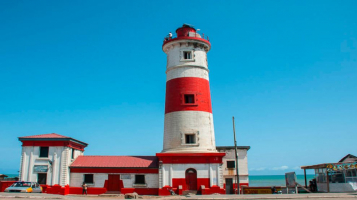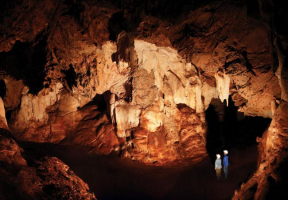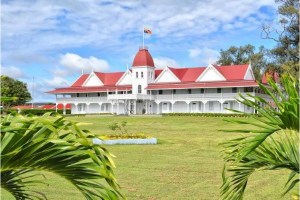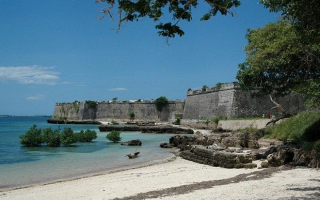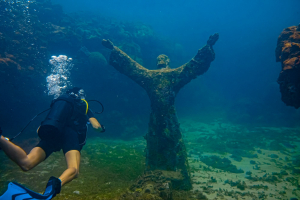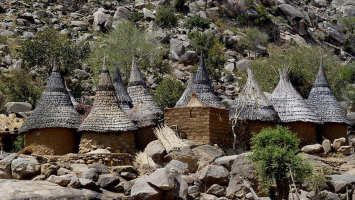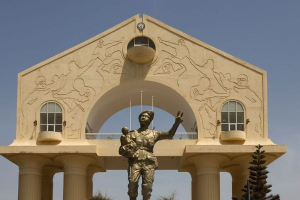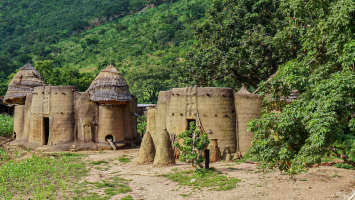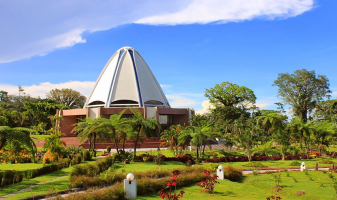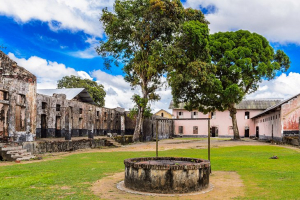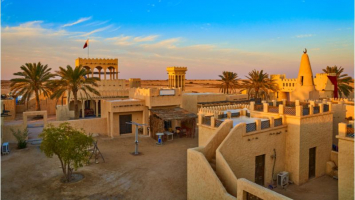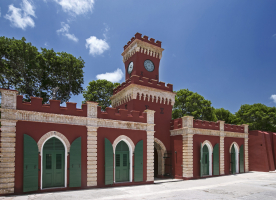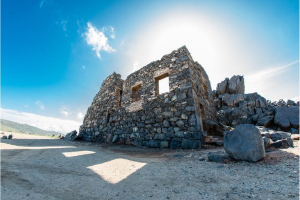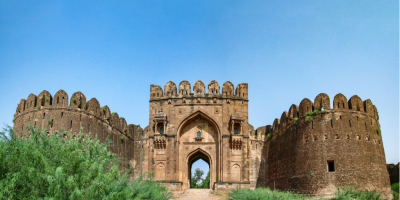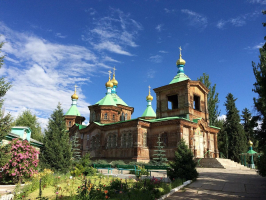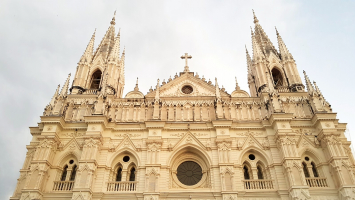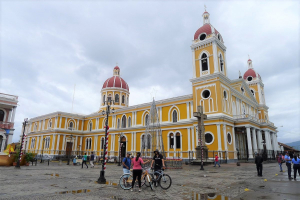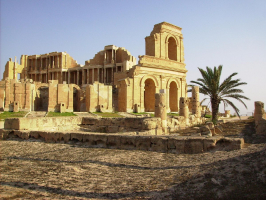Top 6 Most Famous Historical Sites in Namibia
Namibia’s fascinating historical sites can be found across the length and breadth of the country, offering visitors a unique historical perspective. For a ... read more...history enthusiast planning a trip to Namibia and wanting to know where to visit, check out Toplist's pick of the most famous historical sites in Namibia.
-
Twyfelfontein, officially known as Ui-Ais, is an ancient rock engravings site in the Kunene Region, north-western Namibia. It consists of a spring in a valley flanked by the slopes of a sandstone mountain that receives very little rainfall and has a wide range of diurnal temperatures. The site has been inhabited for 6,000 years, initially by hunter-gatherers and later by Khoikhoi herders.
Both ethnic groups used it as a place of worship and a site for conducting shamanist rituals. During these rituals, at least 2,500 items of rock carvings have been made, as well as a few rock paintings. Displaying one of the largest concentrations of rock petroglyphs in Africa, UNESCO approved Twyfelfontein as Namibia's first World Heritage Site in 2007. The Twyfelfontein valley has been inhabited by Stone-age hunter-gatherers of the Wilton stone age culture group since approximately 6,000 years ago. They did most of the engravings and probably all the paintings. The Khoikhoi, an ethnic group related to the San (Bushmen), occupied the valley, then known under its Damara/Nama name Ui-Ais 2,000 to 2,500 years ago. The Khoikhoi also produced rock art which can clearly be distinguished from tuplihe older engravings.
Location: Kunene
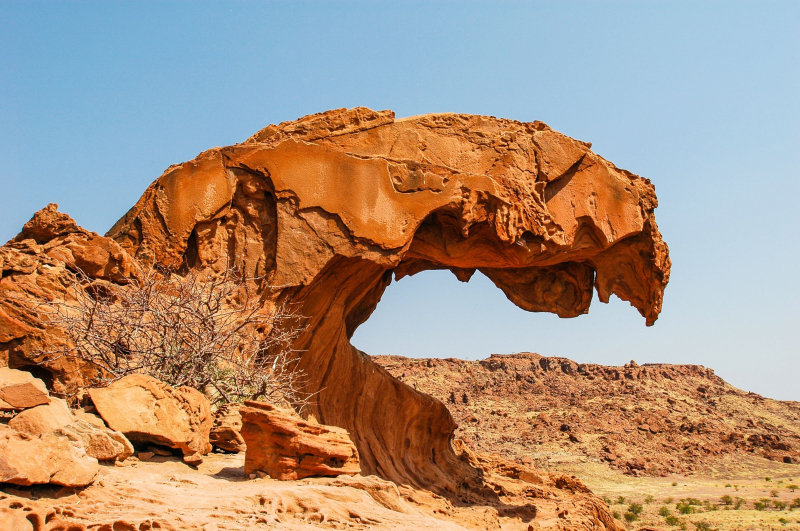
Photo: Arebbusch Travel Lodge Video: 4ever2wherever -
Duwisib Castle, sometimes spelled Duwiseb or Duweseb, is a large medieval-looking fortress in the hills of the semi-arid Southern Namib region of Namibia. It was built by 'Baron' Captain Hans Heinrich von Wolf (born in Dresden in 1873), who was posted to the then German West Africa. After the German-Nama war, Captain von Wolf went to his home in Dresden and married the stepdaughter of the US consul, Miss Jayta Humphreys, on the 8th of April 1907. They decided to settle in Southwest Africa and purchased eight farms in the Maltahöhe area. The famous architect Wilhelm Sander was commissioned to design a building and construction commenced in 1908. Most of the materials were imported from Germany and stonemasons were hired from Italy, Sweden and Ireland.
While they were traveling to Europe in 1914, World War I broke out and the ship carrying von Wolf and his wife was diverted to Rio de Janeiro. Jayta Humphreys had retained her American citizenship and found passage to Europe on a Dutch ship; legend has it the Baron was hiding in his wife's cabin.
On arrival in Europe, von Wolf rejoined the German army, and was killed at the Battle of the Somme in 1916, just two weeks after his registration. His wife could not return to Namibia alone and never reclaim the majestic castle. She spent the rest of her life in the South of England. What is believed to be descendants of their fine thoroughbred horses can be seen today roaming free and wild as Namib Desert Horses along the roadside and in the restricted diamond areas, whether or not this is the origin of these herds is unknown.
This famous historical site in Namibia consists of 900 m2 with a large courtyard and is today open to the public as a museum.
Location: Namib, Namibia
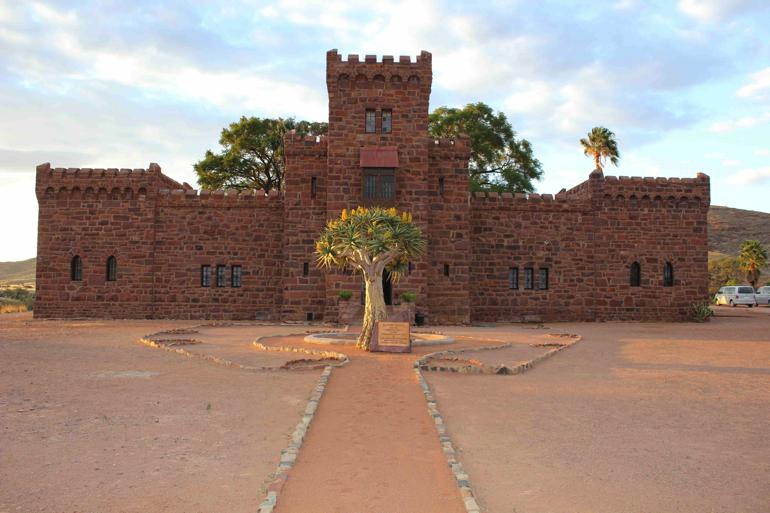
Photo: Namibia Wildlife Resorts Video: JHGast -
In the Namib Desert in southern Namibia located Kolmanskop (Afrikaans for Coleman's hill, German: Kolmannskuppe), a ghost town which is a few kilometers inland from the port town of Lüderitz. It was named after a truck driver named Johnny Coleman who, during a sandstorm, abandoned his bullock cart on a small incline across from the settlement. Once a small but very wealthy mining village, Kolmanskop is now a popular tourist destination run by the joint venture NamDeb (Namibia-De Beers).
In 1908, while working in this area, the black worker Zacharias Lewala found a diamond and showed it to his supervisor, the German railway inspector August Stauch. After realizing that this area was rich in diamonds, a lot of German miners settled in the area, and soon after, the German government declared the large area a "Sperrgebiet", starting to exploit the diamond field.
Driven by the immense wealth of the first diamond miners, the residents built the village following the architectural style of a German town, with amenities and institutions including a school, hospital, ballroom, power station, theater and sports hall, skittle-alley, casino, ice factory and the first x-ray station in the southern hemisphere, as well as the first tram in Africa. It had a railway link to Lüderitz.
The town declined after World War I as the diamond field was gradually exhausted and was finally abandoned in 1954. The desert's geological forces mean that tourists now walk through houses knee-deep in sand. Kolmanskop is well-known to photographers for its settings of the desert sands reclaiming this once-prosperous town. Due to being located in the restricted area (Sperrgebiet) of the Namib desert, tourists need a permit to enter the town.
Location: Namib Desert, Namibia
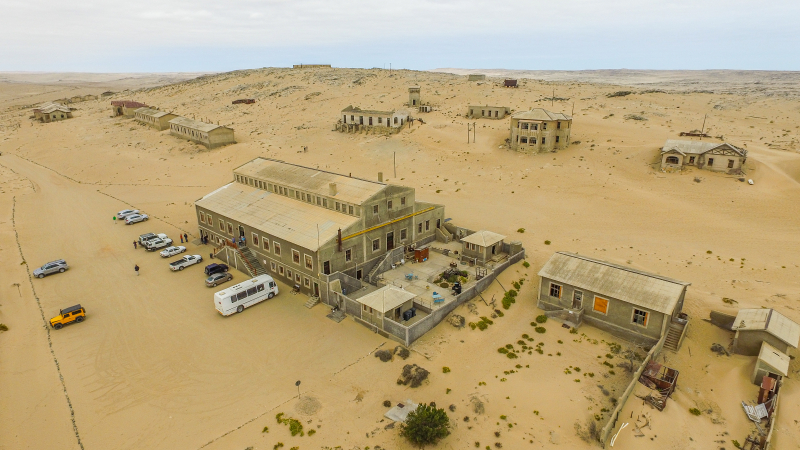
Photo: Wikipedia Video: Eric Bartolo -
The Alte Feste (Old Fortress) is a fortress and museum in the heart of Windhoek, the capital of Namibia. The building was designed by Captain Curt von Francois to serve as the headquarters of the imperial German Schutztruppe (colonial military force) during the German colonial period of Southwest Africa. The location of Windhoek, which was desolate and completely destroyed at that time, was chosen because the Germans felt it would be a buffer zone between the Nama and Herero tribes. However, the fortress was never involved in any military activity.
The foundation was laid on October 18, 1890 by the then Schutztruppe private, Gustav Tunschel. The building was redesigned several times during its first years; its final layout was only completed in 1915. It consists of an inner courtyard with high walls and military accommodation on the inside, as well as four towers. Alte Feste is the oldest surviving building in the city which has since developed around it.
After World War I, German forces surrendered in South West Africa. Windhoek was occupied by the South African Army in March 1915. Alte Feste now served as military headquarters for the South African Union army.
In 1935, the fortress was used for a more peaceful purpose when it was converted into a dormitory for the adjacent Windhoek High School. Severely dilapidated, it was designated a National Monument in 1957. The building was extensively renovated in 1963 and has since housed the National Museum of Namibia.
In 2010, the Reiterdenkmal, Windhoek's famous equestrial monument, was placed in front of Alte Feste. It was removed and put into storage on Christmas Day in 2013.
Location: Windhoek, Namibia
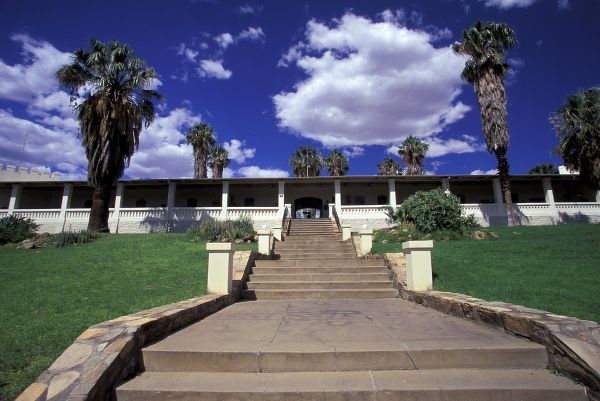
Photo: Media Storehouse 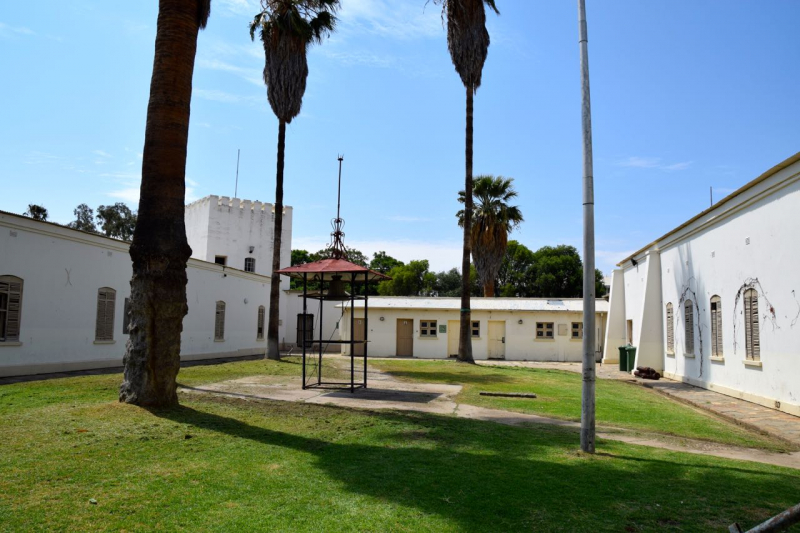
Photo: World Adventurer -
The Goerke House is a colonial building merging Art Nouveau elements with African themes in the Namibian port city of Luderitz. It is one of the most famous historical sites in Namibia and is on the list of National Monuments in the country.
From October 1909 to September 1910, it was built to the designs of architect Otto Ertl as the home of Lieutenant Hans Goerke, who arrived in Swakopmund with the German Schutztruppe in 1904 and became head of the Emiliental diamond company in Luderitz in late 1909 after his service. In 1912, he returned to Germany.
In 1920, the diamond company Consolidated Diamond Mines of South West Africa (CDM) acquired the building. In 1944, this company sold it in turn to the South African Mandate Administration of South West Africa, which set up living space for the local judge (Drostdy) there. In 1981, the city government was moved to Keetmanshoop. In 1983, the CDM, which has been called NAMDEB (Namibia Diamond Corporation) since late 1994, bought the building back, renovated it and has since used it as a guest house.
The Goerke House is not far from the Felsenkirche on the Diamantberg above the city. The sundial on the tower, half-timbering, bay windows, decorations and carved wooden balconies characterize the facade. Note the welcoming inscriptions on the wooden front door and the entrance hall wall. As you climb the wooden staircase, you will come across an impressive stained-glass window with flamingo motifs characterizing the interior. The oak furniture, however, is no longer original. Although the original furnishings are mostly gone, the house has been carefully restored and the display of old photographs helps preserve the memory of the house as it once was.
Location: Luderitz
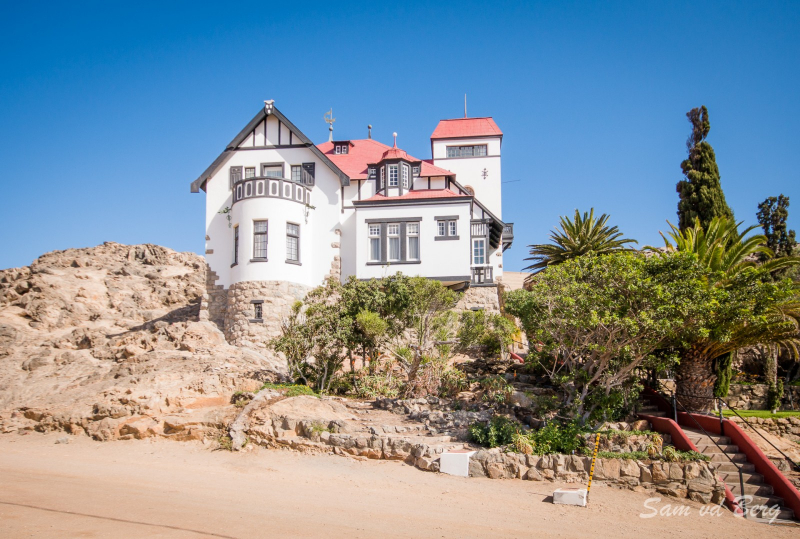
Photo: Namibia Accommodation 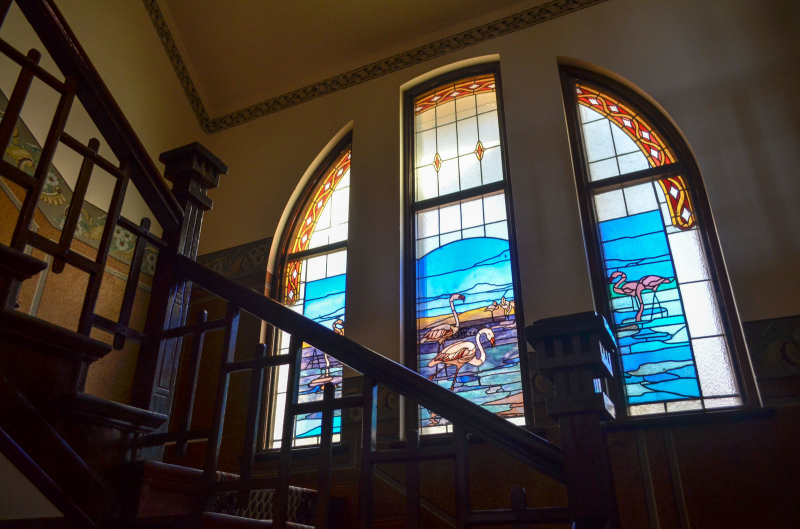
Photo: Art Nouveau World -
The Rock Engravings at Peet Alberts Koppie, Kamanjab have been described as 'one of the richer occurrences in number and quality in Namibia'. There are around 1,200 and 1,500 rock engravings of both animal and abstract designs found at the top of the Peet Alberts Koppie at Kamanjab Farm. Peet Alberts was one of the Dorslandtrekkers and a former owner of the farm, who settled in Namibia.
Those on a self-drive safari in Namibia can access the mountain ridge where the rock engravings are located, from the Outjo - Kamanjab road, 10km south of the town of Kamanjab. There is a small path that leads north for about 1km and access to the appropriate hillock is through an entrance gate.
The most prominent engraving at this site is one of a giraffe which measures 330cm from the hind hooves to the ears. It is the biggest rock engraving in Namibia. Both this giraffe and several other abstract works are among the oldest engravings in the country, which often overlap each other. They include elephant, guinea fowl, kudu, leopard, oryx, leguan, rhinoceros, scaly anteater, stork, and warthog. The abstract engravings include circular shapes, crossed and dotted circles, a star, and a honeycomb. There are several depictions of humans and children's feet.Location: Kamanjab
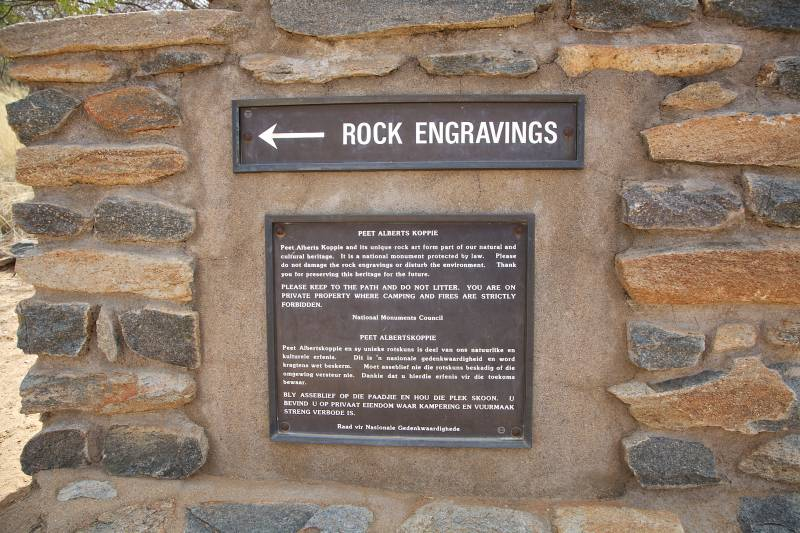
Photo: The National Heritage Council of Namibia Video: Voyage with Moune








